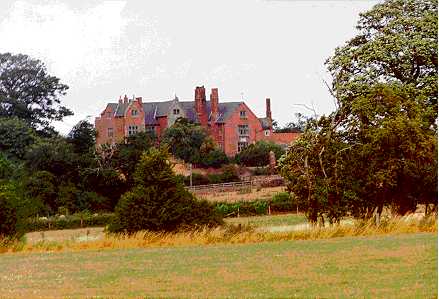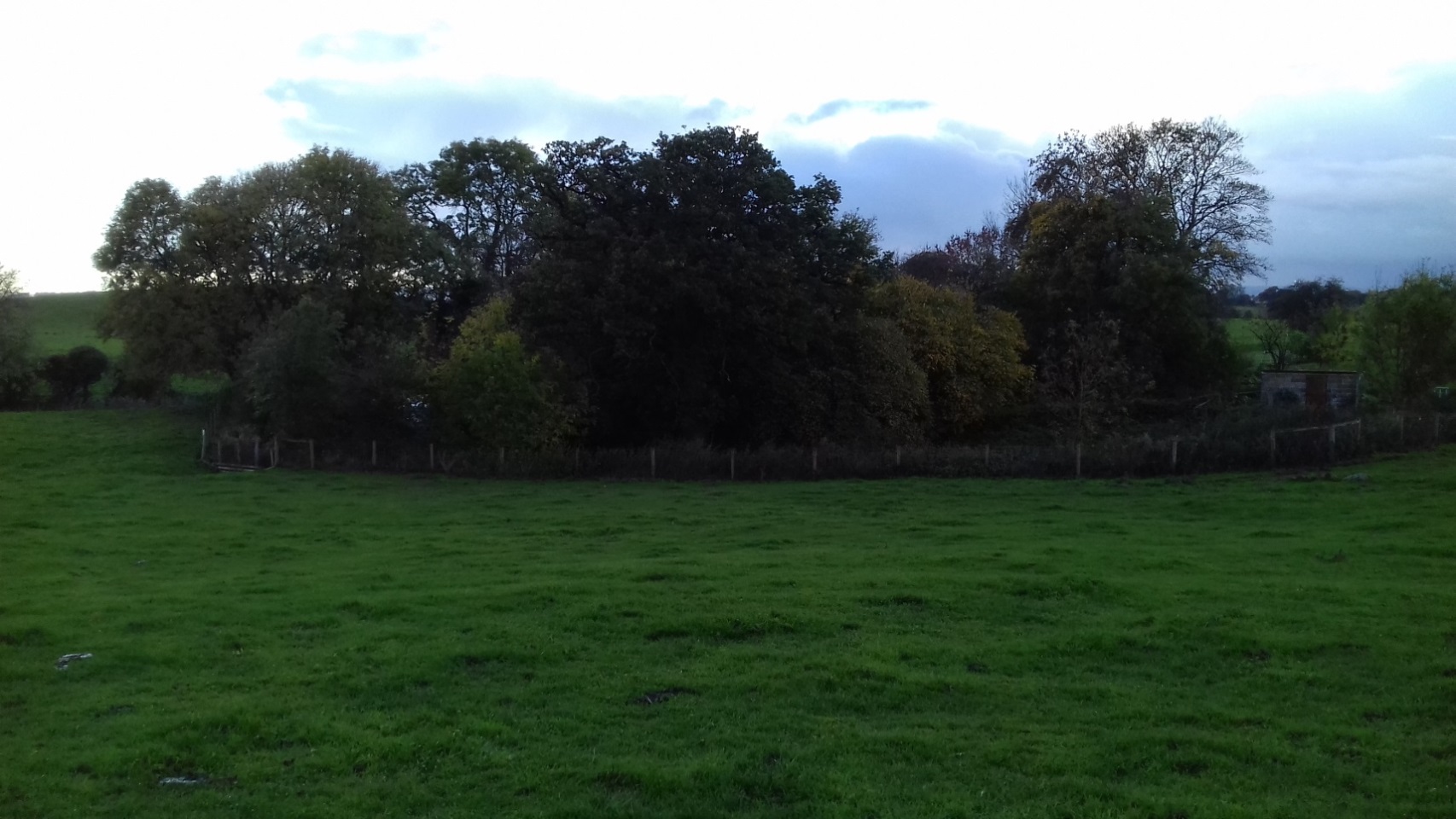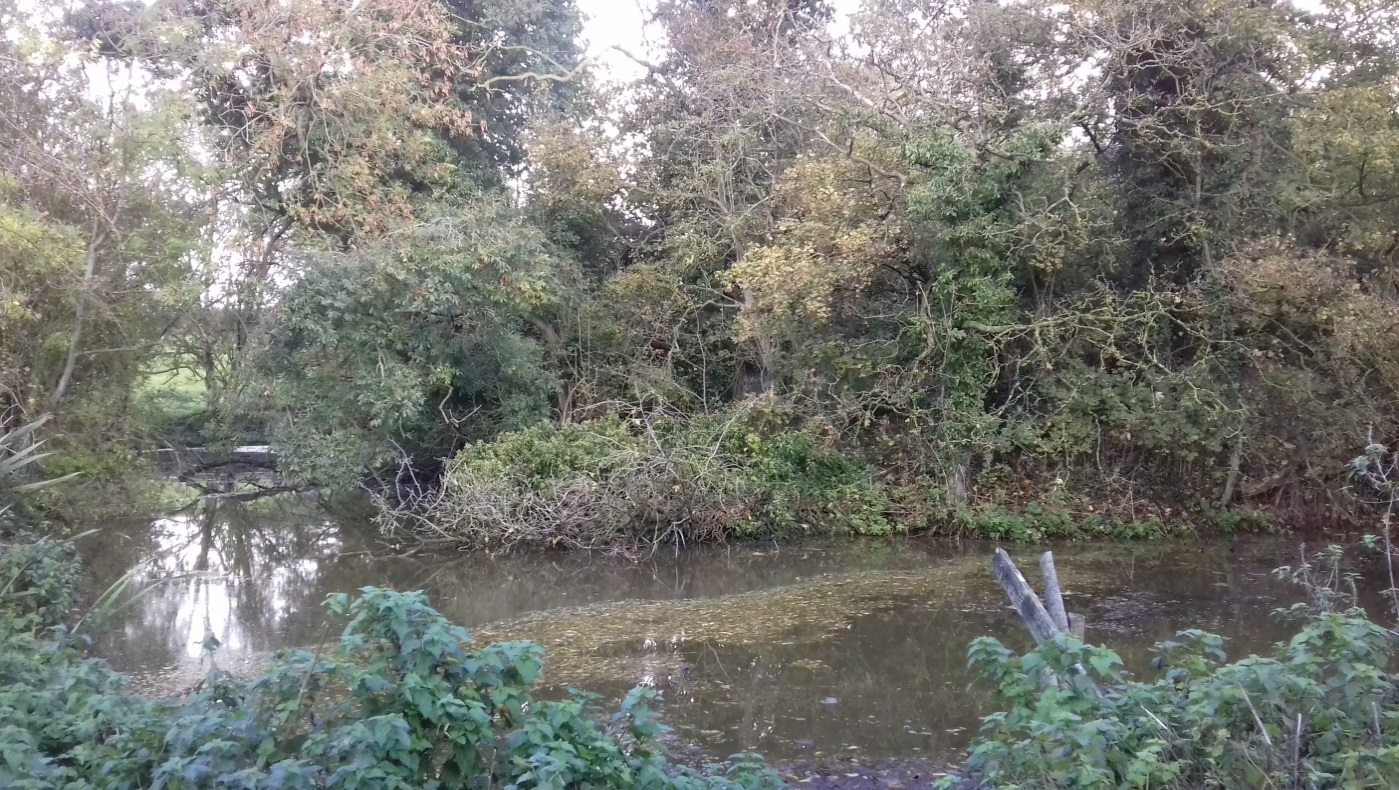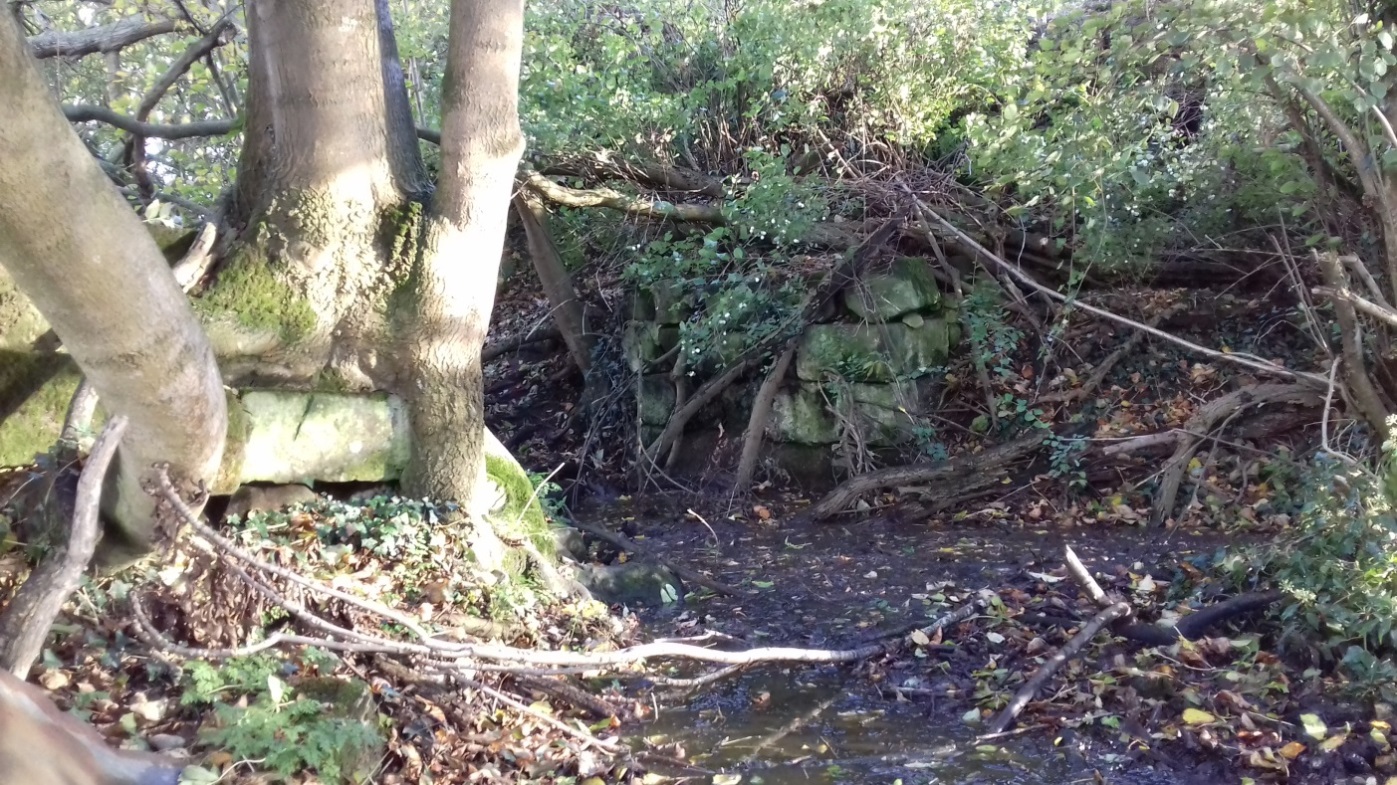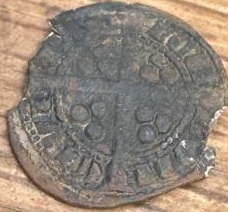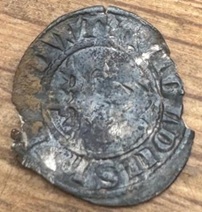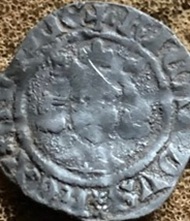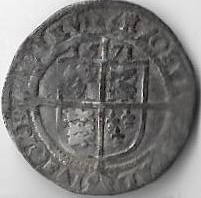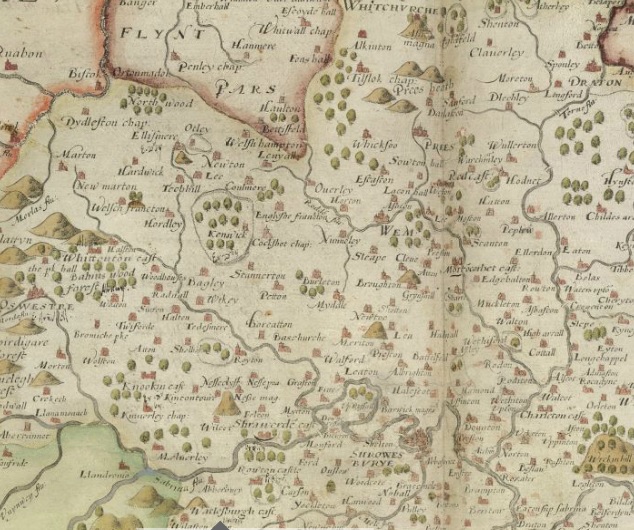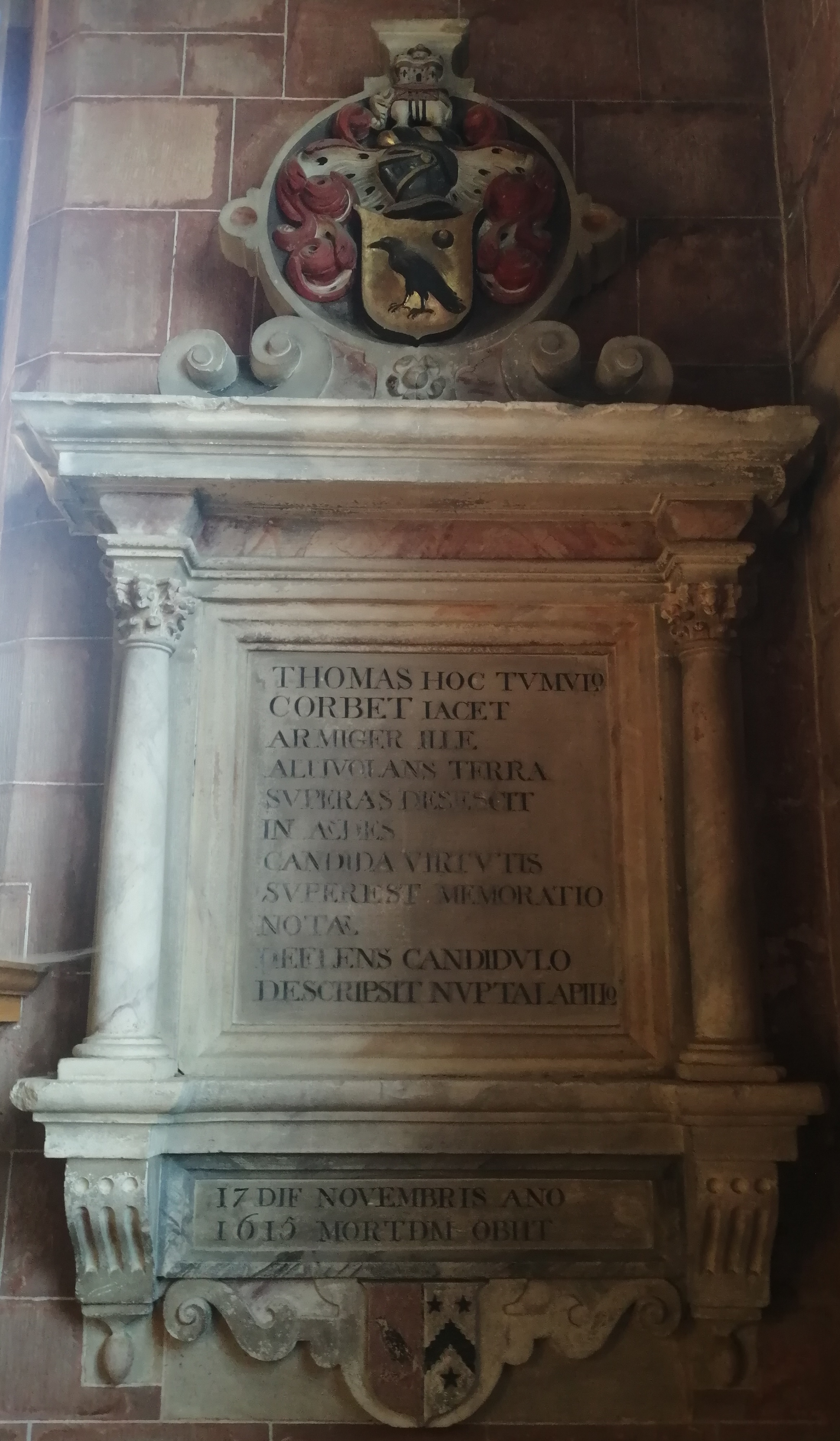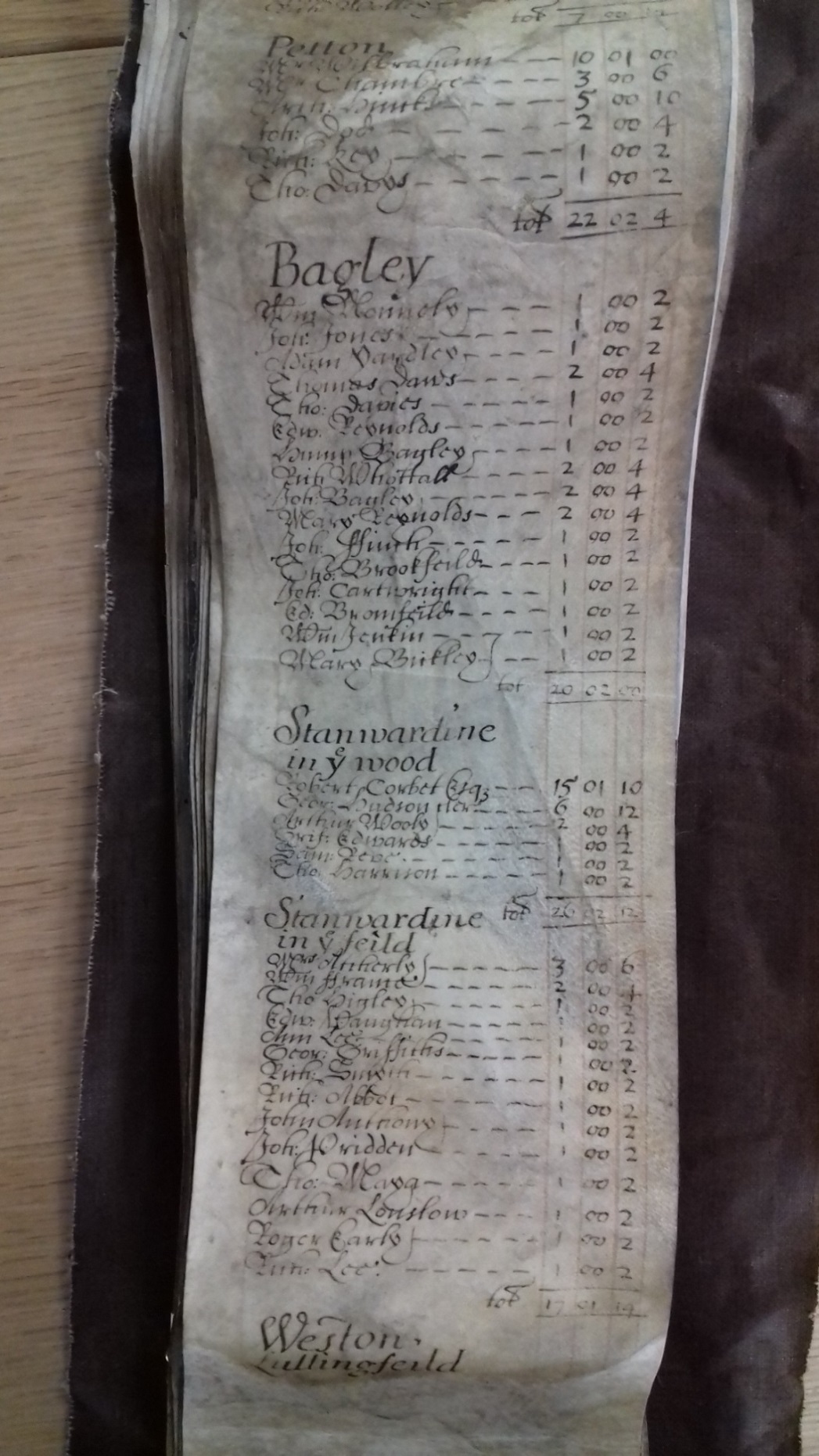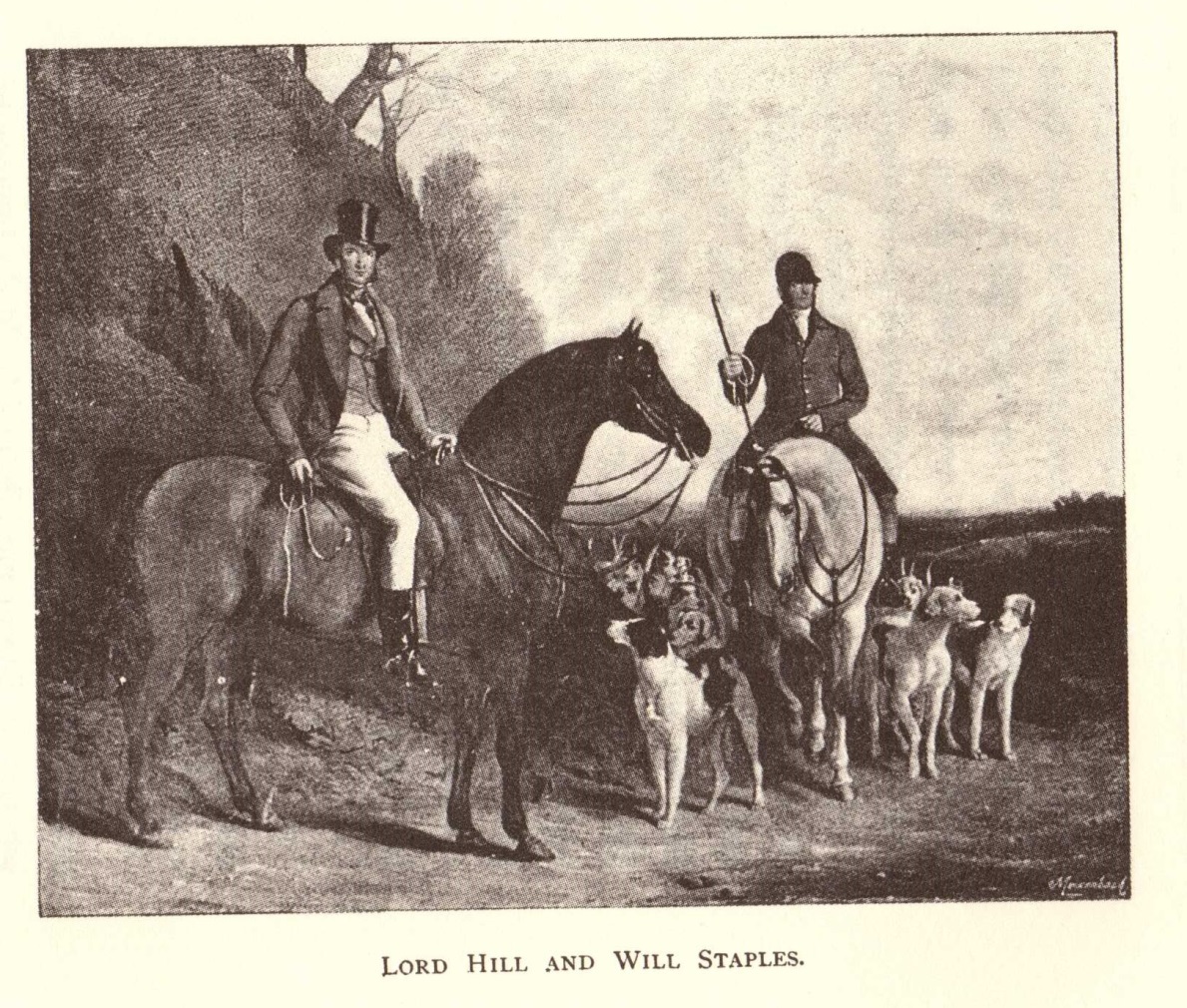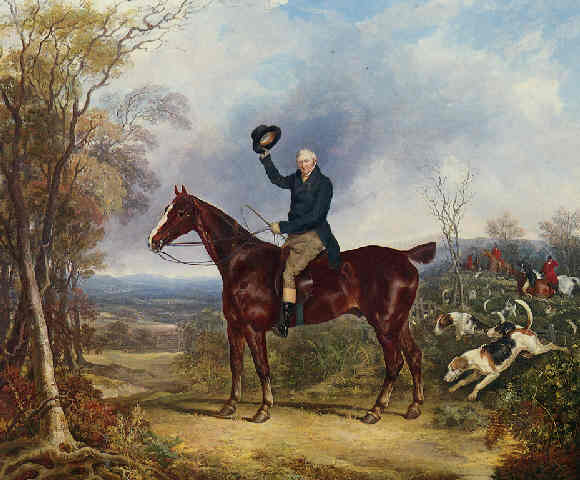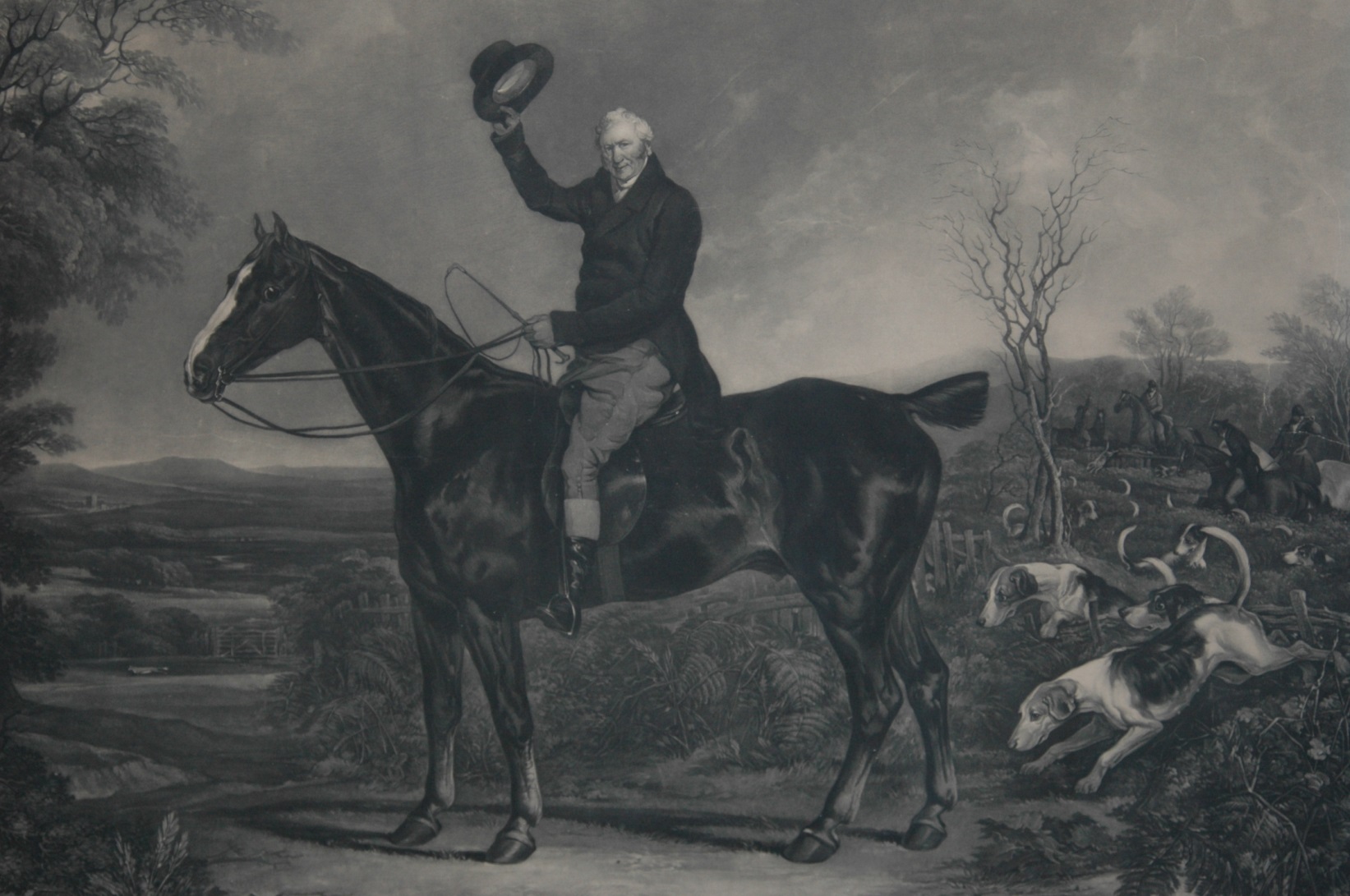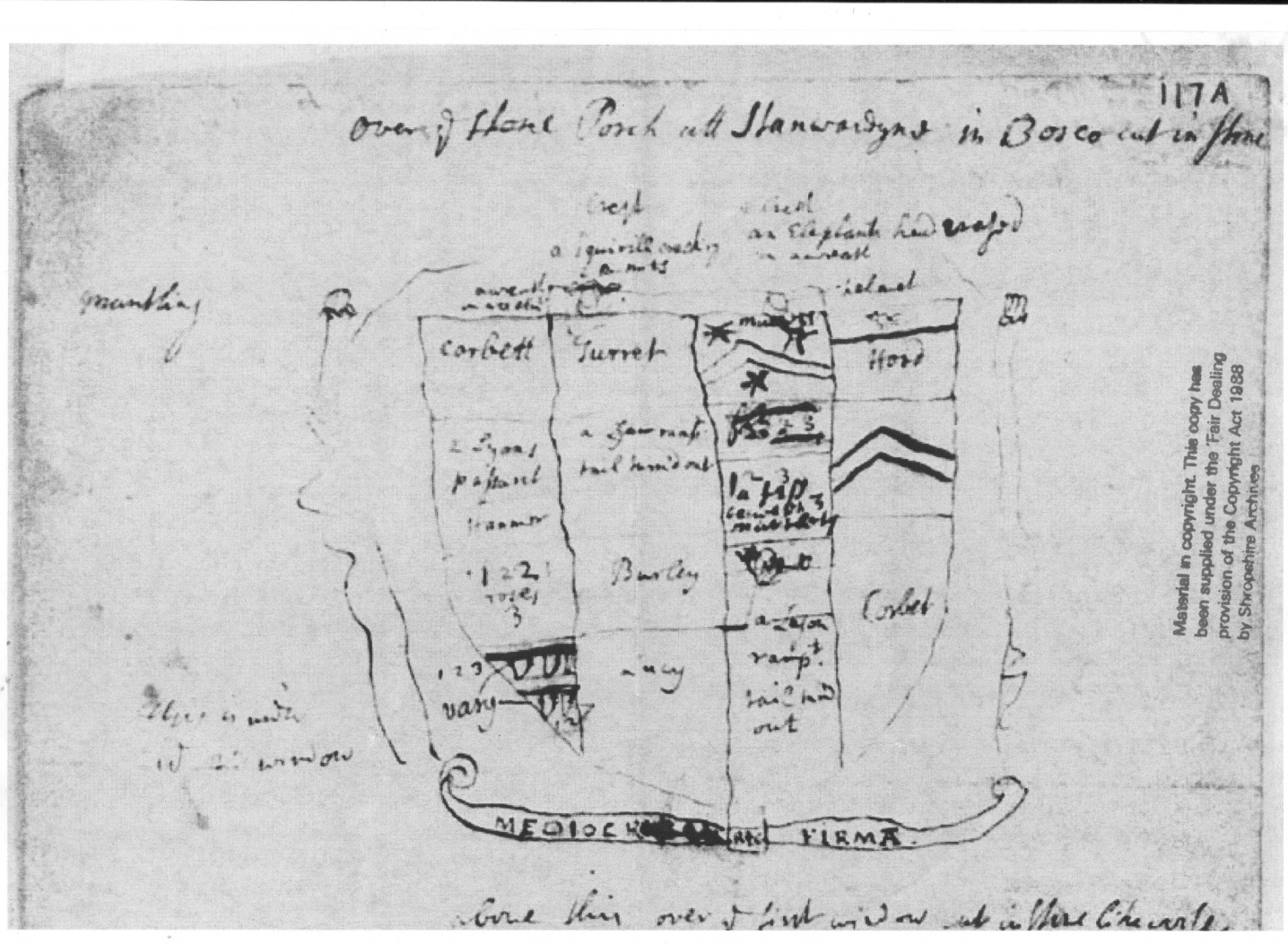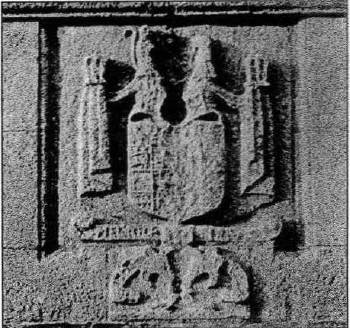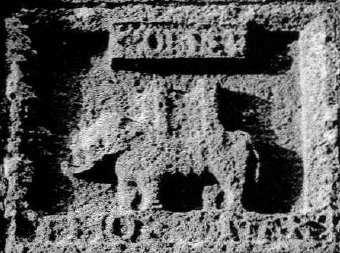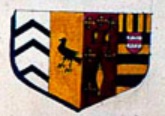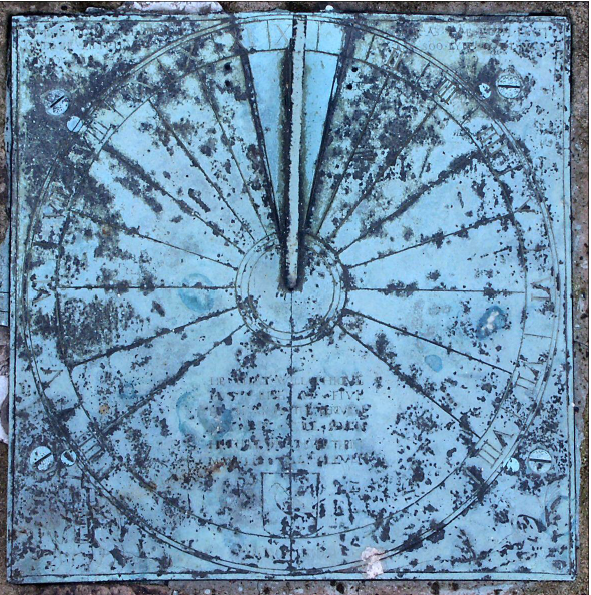Cockshutt Steeplechase, 1 Dec 1837
Stephen Denston organized a 4 mile steeple chase race with 2000 people present on the 1st December starting and ending at Stanwardine Hall and passing through Cockshutt, Crosemere and Petton. There were seven horses: Tarporley ridden by Stephen Denston in orange and white, Bootjack ridden by Mr Watson in black and white, Miracle ridden by Mr Clay in purple and crimson, St David ridden by W Sparling Esq and owned by Mr Kynaston in green with a red cap, Pavillion ridden by Mr K Bowens in orange, Rat Tail ridden by Mr Burtonborough in yellow and purple, Roy More ridden by Mr Minors in blue and white.
Each horse had to carry 13 stone. The officials were J. R. Kynaston (Steward), A. W Corbet, W Sparling (Junior), Dryden R Corbet, Clement Hill, P Charlton, and Captain Tudor Williams Junes Barker. (Ref 12).
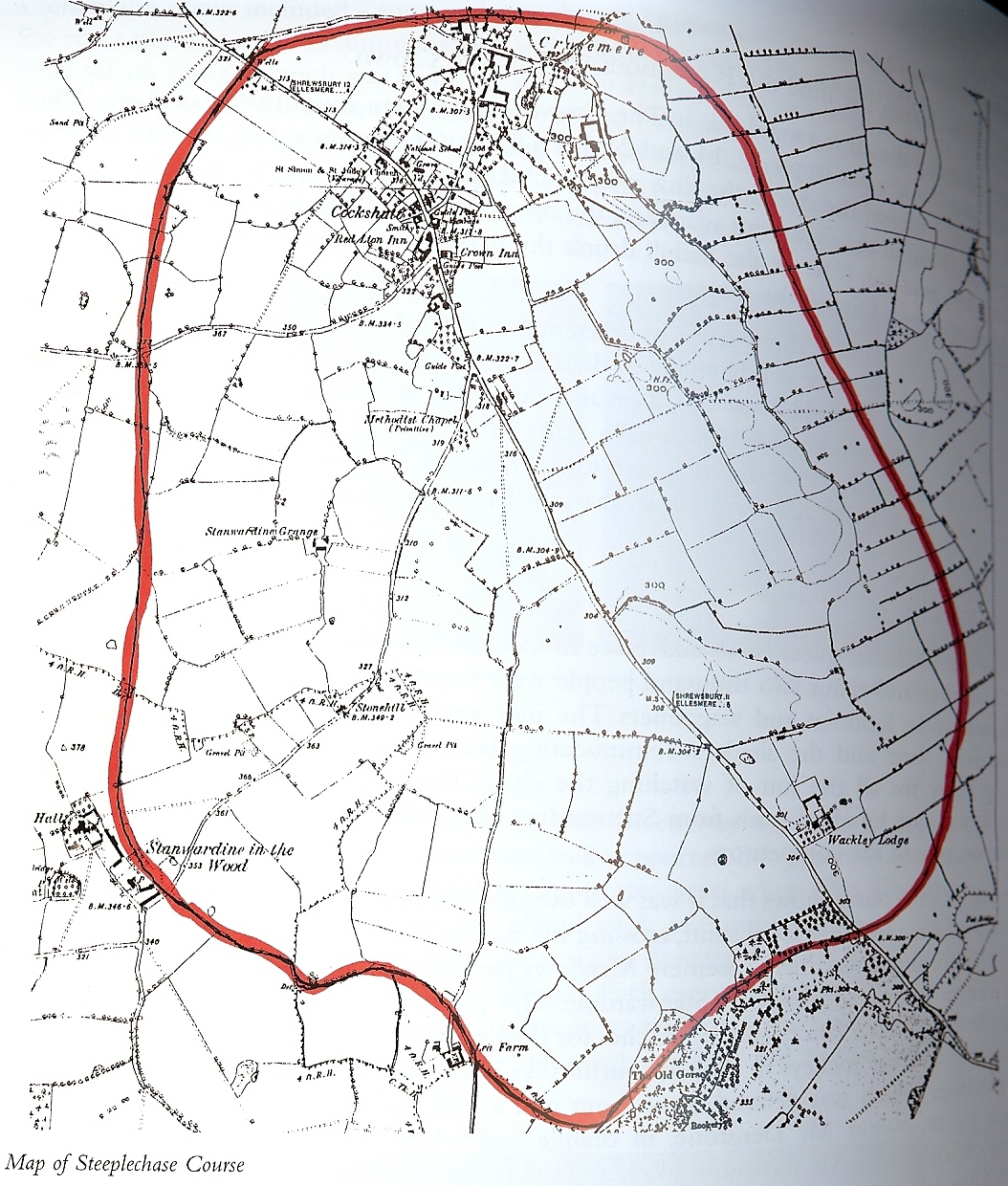
The following newspaper articles of the account of the steeple chase were kindly transcribed by John Pinfold who has written a book on the history of Aintree and is thinking about writing a history of racing in Shropshire:
Shrewsbury Chronicle, 24.11.1837
‘A Steeple Chase open to Shropshire will take place on Friday next, the 1st December 1837’.
Rules:
1. Open to all ages, each horse to carry 13 stone, to be run about 4 miles, the second to save his stake.
2. To start near the village of Cockshutt, the horses to be rode by gentlemen or farmers; entrance 1 sovereign each.
3. The winning horse to pay all expenses for flags and measuring the ground.
4. The horses to be on the ground by one o’clock and the riders at half past twelve to be weighed by the Umpire.
5. That all disputes be settled by the Umpire, whose decisions should be final.
6. Any gentleman may enter his horse on or before Tuesday the 28th of November, at Mr. Green’s Office, Secretary.
7. The ground is so all arranged that the whole of the race may be seen from the coming-in chair. No spectators will be allowed to ride in the race or break down the fences.
Entries:
William Sparling Esq.’s gr g Saint David
Mr. S. Denston jun.’s ch h Tarporley
Mr. Wm Burroughs nms b g Rat Tail
Capt. Sparling’s b g Moon Raker
J.E. Watson Esq. nms ch g Boot Jack
Dryden Corbet Esq. nms gr g Grass-hopper
S.W. Denston Esq.’s ch g Pavilion
Thos. S. Oswell Esq.’s br g Tom Thumb
John Dodd Esq.’s b g by Sir Edward
Mr. Clay’s br g Miracle
Shrewsbury Chronicle, 8.12.1837:
‘The Shropshire Steeple Chase – a description of sport hitherto unattempted in this county, has at length been introduced, under such auspices, and with such exciting novelty, and the enthusiasm and personal sanction of the first sportsmen, as to place it very forward in the number of field sports for which our county is famous. A Contest open to All England, in which the stakes will be valuable, is now maturing; but in the meantime a Chase confined to the county has been run and gained in gallant style, in the presence of many hundred spectators. On Friday morning, all the country round, and many sportsmen from a distance, excited by the notice in our last Chronicle, made for Cockshutt, where shortly after mid-day the following horsemen and steeds appeared on the field to contend for the prize:-
Mr. S. Denstone, jun.’s Tarporley, orange and white (ridden by the Owner)
Mr. Watson, nms Bootjack, black and white (Mr. G. Denstone)
Mr. T. Clay’s Miracle, purple and crimson (Owner)
W. Sparling Esq.’s St David, green and red cap (Mr. Kynaston)
Mr. F. Bowen’s Pavilion, orange (Mr. A.Woolrich)
Mr. Burton Burroughs nms Rat-tail, yellow and purple (Mr. J. Cook)
Mr. Minor’s Rory O’More, blue and white (Mr. Ogle)
The distance over which they were to ride was four miles; and each 13 stone. They started from near Stanwardine Hall, thence to Cockshutt, by Petton Old Gorse and Petton Lodge & the left of Stanwardine Hall where was the winning post; being a country abounding in as many comfortable opportunities of neck-breaking, staking, ditch-grubbing and summersetting, for men and horses, as the most ardent sportsman could desire. Tarporley took the lead over the first fence, and led the way over the second at a rare pace. Pavilion making a distressing genuflection thereat which his rider soon overcame. Rat-tail jumped sideways at fence the third, and his rider divorced him. Some dismal drains and sunk fences succeeded, into the second of which Tarporley, Bootjack and St David tumbled, permitting Miracle to get a field or two a-head; but Tarporley and Bootjack having regained their legs, took drain after drain in gallant style, till the last, which was both wide and deep, and railed on both sides, and into which they both fell, Bootjack keeping his place therein, whilst Tarporley, gallantly extricated by his rider, was mounted and off like lightning, passing Miracle dead beat on the way, and with Bootjack second, leaving all his competitors far behind. The distance was run in 14 minutes; and was accomplished without accident or serious injury; leaving Stephen Denstone the stakes for his prize, and confirming him as a fitting representative of his gallant father, whose deeds in the fox-chase are the talk and marvel of every good sportsman.’
North Wales Chronicle, 16.12.1837
Grand Steeple Chase
This interesting sport came off near the village of Cockshutt, on Friday last, Dec 1st, and the day being fine, a lively sense of confusion and bustle was exhibited. Indeed, so intense was the interest displayed upon the occasion, that upwards 2000 persons were present, comprised in a motley group of carriages and gigs, with horsemen, footmen, and waggon men, affording a regular benefit to the good folk of the village. The inns were all filled; houses, bake-houses, blacksmiths’ shops and sheds, either for men or for horses, the great and small of the village, were well-crowded with customers, some eating, some drinking, while other were getting ready for the sport. In short, it was all fun and noise.
At one o’clock we took a view of the ground; the start was fixed 100 yards from Stanwardine Hall, the residence of Mr. S. Denstone; from thence across three fields to the village of Cockshutt, The Moors, Petton Old Gorse, near Petton Lodge, along the road, and up by the left of Stanwardine to the winning post, a distance of four miles, over a wet and heavy country, abounding with strong fences, sunk fences, drains &c., &c.
After much delay (an hour and half after the appointed time) the horses and their riders were seen to approach the starting place, the riders in their silken jackets; and at the word “ready”, off they went, bang over the first fence, which was done in a masterly manner. It would be difficult to say which of the first four, Tarporley, Bootjack, Rat-tail, or Miracle, had the best of it – Pavilion and Rory O’More not getting off quite so well as the others.
At the second fence Tarporley singled himself out, and cleared it, with the others in his wake. Rory O’More and Pavilion keeping each other company at the same fence, Pavilion came down, and off came his rider but without much injury; and remounting, after the rest he went.
At the third fence Rat-tail swerved, and his rider fell – and his steed having taken himself off, was not caught for some time. St David, who was leading at a steady rate, Tarporley, Miracle and Boot-jack, had now got a quarter of a mile ahead of Pavilion and Rory O’More; but on crossing the road for the Moors the pace became very so so; though St David was still a-head from 50 to 60 yards. On arriving at the first drain, they all cleared it, together with the next fence; but at the second drain, in fell St David, Tarporley and Bootjack, but Miracle cleared it, as he did all his other leaps over dranes [sic], hedges and gates, which gave him a great advantage, and at that time he was two fields a-head of the lot. Tarporley and Bootjack, nothing downhearted, persevered and got over the drains except the last one, which was very wide, with rails on each side, and both jumped in it. Mr. Denstone, like a good sportsman, throwing himself off his steed, and horse and rider got out, leaving poor Bootjack to fight for himself.
Tarporley, again all right, was up and at ‘em across the ploughed field for Petton Old Gorse, and for the road, where he overtook Miracle, who had caught it so well that out of the lane his rider could not coax him, although at one time he was three fields in front, and it was then thought he must have won. After this Tarporley had it all his own way, having left one of his competitors in a lane and the other in a drain; and on his coming in sight he met with long and and strong cheering from the immense number of people who had gathered together on the Little Hill. He was the decided winner. Bootjack shortly afterwards came up and was of course placed second; but what became of the others we could not find out, except that Rat-tail had been seen crossing two or three lanes, to meet Tarporley on coming in.
We are happy to add that amongst the very many mishaps of the day, no accident occurred excepting a few falls, with sundry spill &c. The four miles was run in fourteen minutes and a half. The winner, after paying the usual expenses, will be entitled to £20.
Original newspaper cuttings
